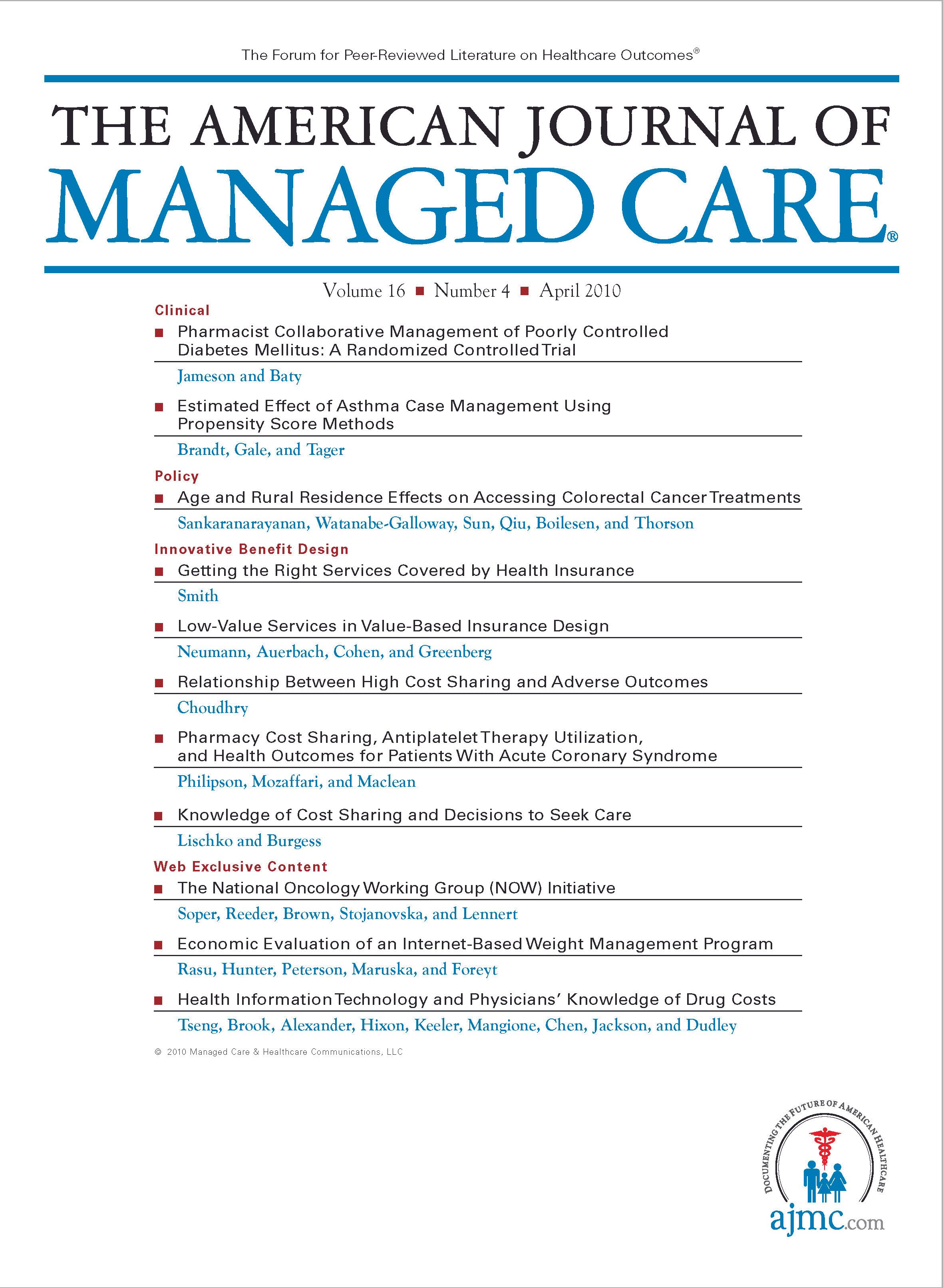- Center on Health Equity & Access
- Clinical
- Health Care Cost
- Health Care Delivery
- Insurance
- Policy
- Technology
- Value-Based Care
Estimated Effect of Asthma Case Management Using Propensity Score Methods
An asthma case management program increased preventive care but did not significantly decrease markers of exacerbations.
Objective: To estimate the treatment effect of participation in an asthma intervention that was part of the National Asthma Control Program.
Study Design: Cross-sectional; difference in outcomes between participants and comparable nonparticipants matched by using propensity scores.
Methods: Data on children who participated in asthma case management (n = 270) and eligible children who did not participate in case management (n = 2742) were extracted from a Medicaid claims database. We constructed measures of healthcare utilization, sociodemographics, and neighborhood characteristics. After creating a comparison group similar to the participants in terms of all characteristics before participation, we estimated the effect of the program on asthma outcomes.
Results: Participants were more likely to have vaccinations for pulmonary illness (95% confidence interval [CI] = 1.82, 4.81), to fill a prescription for controller medications (95% CI = 1.07, 2.19), and to have a refill for rescue medication (95% CI = 1.07, 2.07) after the program than comparable nonparticipants. There was no statistically significant difference in the number of nebulizer treatments or emergency department visits between the 2 groups.
Conclusions: The program did increase the use of preventive healthcare by participants. Over the time period we studied, these behaviors did not decrease healthcare utilization for asthma exacerbations. We were unable to discern whether the lack of effect was because of the nature of the program, heterogeneity of the effects, or barriers outside the program’s control.
(Am J Manag Care. 2010;16(4):257-264)

Trends in Hospital Pricing for Vulnerable Emergency Department Users, 2021-2023
December 4th 2025Self-pay emergency department prices rose significantly from 2021 to 2023, especially at for-profit and system-affiliated hospitals, highlighting growing affordability challenges for uninsured and underinsured patients.
Read More
Integrated Care for Chronic Conditions: A Randomized Care Management Trial
December 3rd 2025The authors sought to understand the differential impact of payer-led community-based care management approaches on stakeholder-oriented outcomes for publicly insured adults with multiple chronic conditions.
Read More

